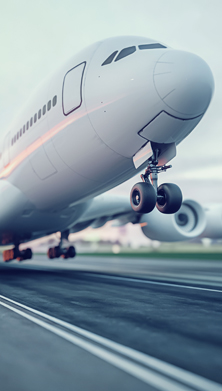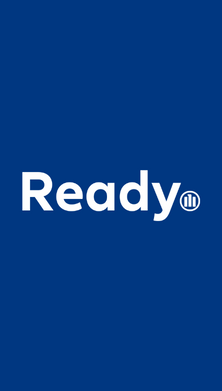In brief:
- New vehicle “floats” using latest lighter-than-air technology that combines aerodynamic lift with vectored thrust
- At beginning of test flight stage with goal of eventual global commercial deployment
- Applications include transportation, communication, and intelligence, surveillance and reconnaissance missions
- Insurance is key to public confidence in Airlander
Although it resembles an airship on steroids, Airlander 10 is the world’s most innovative, practical and commercially useful hybrid aircraft . A cross between an airplane, airship, helicopter and hovercraft, it’s bigger than a football field and 60 feet longer than an Airbus 380 – and greener and quieter than any other air transport in existence.
Named for its cargo capacity of 10 tons (a future Airlander 50 is already on the drawing board that will carry 50 tons of cargo; a model 200 or 500 isn’t beyond reason) the new craft is an elegant workhorse alone in its field.
The designer and manufacturer of Airlander is privately-owned, UK-based Hybrid Air Vehicles (HAV). The craft employs a simple, stable, ground-breaking design void of internal or external structure, with an envelope (shell) made of triple-ply, anti-UV, anti-leak, anti-strike Teflon-type material that is exceptionally strong, durable and repairable or patchable in the field.


The technology used today, however, is far different than what was used then.
Airlander’s innovative technology
According to HAV, the founders of Airship Industries met with English scientist, engineer, inventor and airship specialist, Barnes Wallis, in 1971 to identify limitations of the traditional airship design.
On a beer mat, Wallis jotted down some notes: lifting gas should not be hydrogen, but helium; fabric should be improved to avoid non-rigid shells; weight saving plastics and composites should be used where possible; four-vectored propulsors should be incorporated to improve the maneuverability of the craft; the flight control system should provide the pilot more command over the craft. These hallmark features were later adapted for Airlander.
Up to 60% of the vehicle’s lift is provided by helium and the remainder by the forward momentum provided by an aerodynamic “wing” powered by four independently configured and vectored engines, isolated in respect of lightning strikes.
Its multi-mission capability allows Airlander to carry passengers, payloads or stores for up to five days without landing or to operate within an unmanned environment for as many as 15 to 20 days. It can land on ice, sea, sand, anywhere. In 35 knot crosswinds, it would take off vertically like a helicopter. All it requires to operate is a 100m rectangle of clear space beyond its actual “footprint”.
In designing the vehicle, HAV re-examined basic aerodynamic principles and applied modern technology and materials to create new capabilities and efficiencies. The result is a new, improved mode of air transport offering major improvements in safety, operating cost and flexibility, and environmental impact, with a significantly lower carbon footprint than any other form of air transport.
In fact, it has won awards for its revolutionary, green design: a $4.75m (£3.4m) UK Regional Growth Fund award for innovative technology and a $2.7m (€2.5m) EU Horizon 2020 Grant award for being a viable, green transportation solution.
The vehicle cost about $100m (£60m) to design and build, according to Chris Daniels, Communications Director, HAV. “We believe it will be the first aircraft of its size to achieve commercially viable zero carbon flight, once the technology is well established in the coming years to allow for that.”
Capabilities and uses
Currently Airlander is at the beginning of a rigorous testing phase, having only left the hangar for its initial flight this spring.
An earlier version had one successful US Department of Defense (DoD) test flight in 2012 but it was a successful flight. Military cuts subsequently cancelled the program. HAV was granted an export licence afterwards which permitted repatriation to the UK.
HAV sees a host of potential applications for the Airlander series, including communications, heavy lift, and intelligence, surveillance and reconnaissance (ISR) deployments.
Potential uses of the Airlander for communication purposes might be as a communications relay station enhancing or improving existing communication infrastructures or even providing infrastructure to extremely remote areas with no pre-existing services.
Prospective heavy lift uses could include remote access to or from inaccessible locations, to transport specialist, time critical or bulky freight over long distances, to furnish logistical support to military ground operations or to move transoceanic freight requiring quicker delivery than sea-freight at a much lower cost than airfreight.
Potential ISR scenarios might be to offer commercial sensing/surveying to unmanned military reconnaissance and sensing missions, to patrol the seas or national borders, to run search and rescue missions or even to provide non-military surveillance activities for commercial or community security.
“This technology is almost endless in its applicability while also being beneficial to the surrounding area and the environment at large," says Daniels.
"Besides its myriad uses, we believe that it will deliver 1,800 jobs and significant export revenues to the UK. We have already expanded our workforce from 20 to 115 in under a year.”
As lead insurer on the Airlander 10, AGCS has a stake in the quality of the vehicle’s innovation, design and craftsmanship.
AGCS Underwriting Manager Products/Airports Regional Unit London, Craig Armitage, says: “Allianz’s interest in covering HAV is because we recognize this technology is game changing. It combines the best of rotor wing/fixed wing and lighter-than-air vehicles. It is a remarkable machine and independent aviation experts expect the hybrid market to be worth up to $50bn (£36bn) in the next 20 years with over 600 vehicles deployed.”
“From an underwriting perspective this was an exciting, unusual and challenging project from the start which brought out the best qualities of all the Allianz teams involved,” says Paul Wrenn, AGCS Underwriter Products/Airports Regional Unit London.
Public, private and crowdfunding investment mix keeps Airlander afloat
Insurance is key to public confidence in Airlander
Allianz UK currently insures HAV on a commercial combined/property policy to cover the vehicle and facility at Cardington where work on Airlander is being readied for flight testing. Now, AGCS leads the test flight manufacturers risk policy for the assembly phase and, from February, the manufacturers hull/flight risk (aviation products) policy has taken effect as the vehicle’s construction phase subsides and test flights begin. It’s a good example of how Allianz works with various internal units to create a holistic solution for the customer,” says Armitage.
"Although a new risk, HAV established a technical expertise in its industry second to none. The company is writing the book, so to speak, on this type of technology and public and private confidence in its business model is persuasive. As Airlander moves beyond the commercial production phase and into the testing phase, that confidence will only grow stronger,” Armitage says.
"HAV is a dynamic example of a relatively small company working very hard to establish itself as the global leader in its field. What’s not to like as an insurer with a scenario like that?”
“Airlander is a remarkably safe aircraft,” says Tom Grundy, HAV Operations and Risk Manager. “We are flying this aircraft this year to demonstrate its performance and also to demonstrate its safety and reliability. We want an insurer who understands our business and can tailor their approach as our product matures - Allianz has shown us that they can do that.”
Hwfa Gwyn, HAV Financial Director, explains that usually there are separate policies for individual risks, but companies like HAV ideally look for insurers who can provide holistic solutions that join all the coverage gaps for the whole business: “That was key to our insurance decision to work with Allianz, as well as their financial stability and global footprint to grow as we do and where we do.”
“Once we've demonstrated our capability, reliability and safety to our customers, they will be ready to do business with us and we will grow rapidly,” adds Grundy. “Ours is a constantly changing business and to have a flexible insurance partner is vital to our business strategy.”















